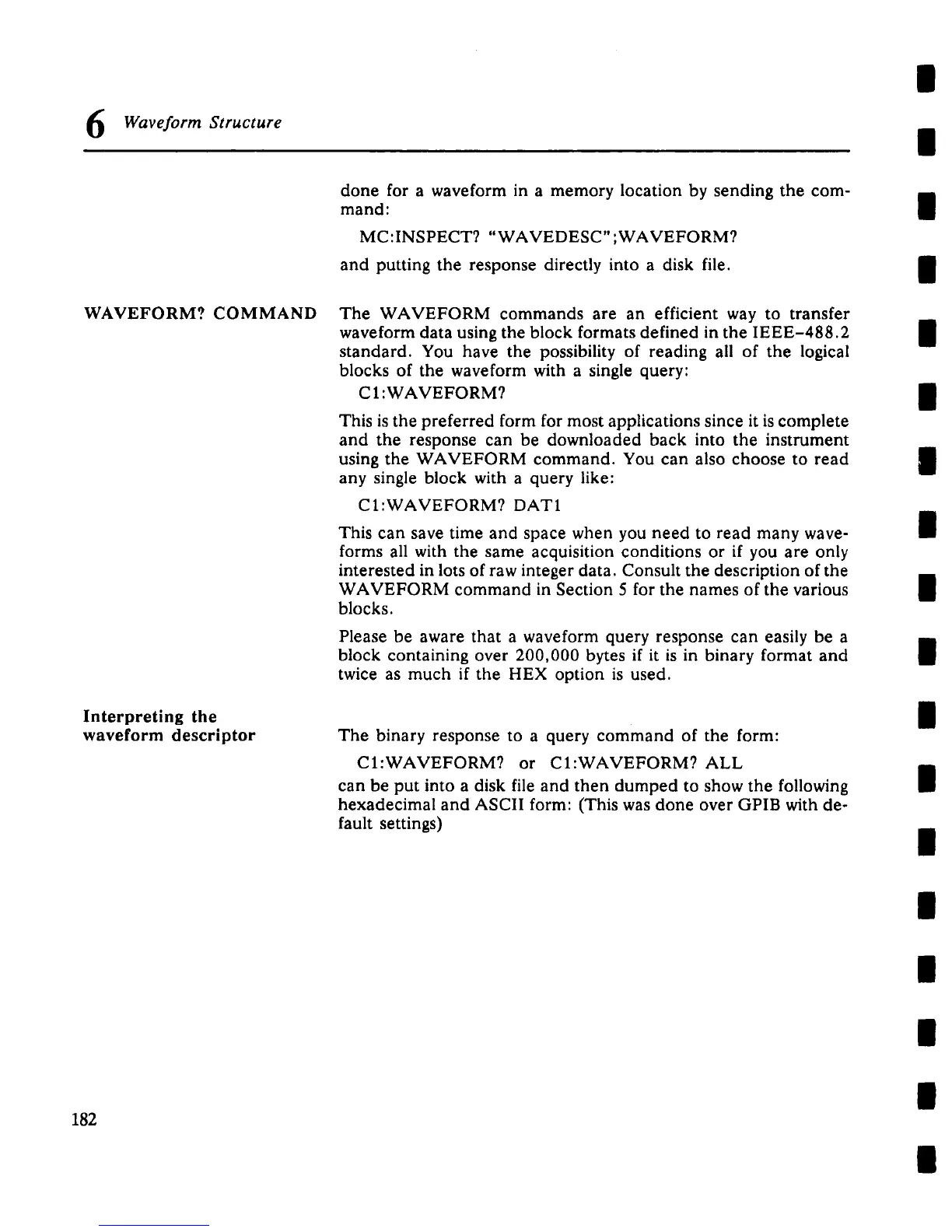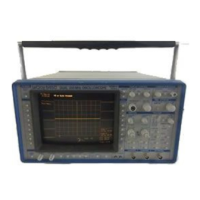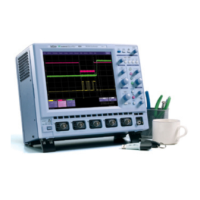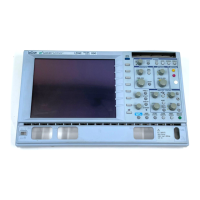6
Wave form Structure
|
|
WAVEFORM? COMMAND
Interpreting the
waveform descriptor
done for a waveform in a memory location by sending the com-
mand:
MC:INSPECT? "WAVEDESC" ;WAVEFORM?
and putting the response directly into a disk file.
The WAVEFORM commands are an efficient way to transfer
waveform data using the block formats defined in the IEEE-488.2
standard. You have the possibility of reading all of the logical
blocks of the waveform with a single query:
C 1 :WAVEFORM?
This is the preferred form for most applications since it is complete
and the response can be downloaded back into the instrument
using the WAVEFORM command. You can also choose to read
any single block with a query like:
C 1 :WAVEFORM? DAT 1
This can save time and space when you need to read many wave-
forms all with the same acquisition conditions or if you are only
interested in lots of raw integer data. Consult the description of the
WAVEFORM command in Section 5 for the names of the various
blocks.
Please be aware that a waveform query response can easily be a
block containing over 200,000 bytes if it is in binary format and
twice as much if the HEX option is used.
The binary response to a query command of the form:
CI:WAVEFORM? or CI:WAVEFORM? ALL
can be put into a disk file and then dumped to show the following
hexadecimal and ASCII form: (This was done over GPIB with de-
fault settings)
|
|
|
182

